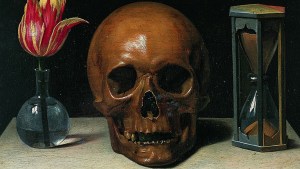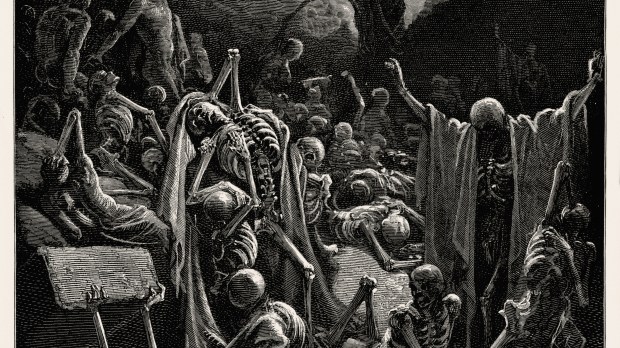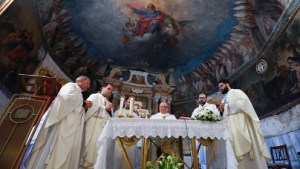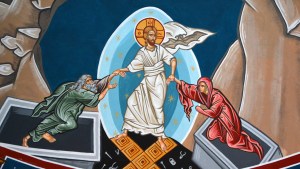Gustave Doré’s dramatic engraving, “The Valley of Dry Bones,” centers on the power of God’s life-giving Spirit – not only metaphorically, but rather literally.
The valley of scattered skeletons is not only the spiritual barrenness caused by sin. It has a more directly anthropological horizon: It is, plainly and simply, a reminder of the universality and inevitability of physical death. A classic memento mori motif. Humanity’s fallen condition and inevitable mortality are starkly revealed in this (borderline) disturbing image.
Ezekiel’s prophetic question, “Can these bones live?” carries existential weight for all humanity. In Catholic theology, the answer resonates with the Easter narrative. Christ’s own death and resurrection exemplify the ultimate victory over death and prefigure the promise of a bodily resurrection for believers at the end of time – the eschatological restoration. Christ’s resurrection defeats the finality of death.
The whirlwind, the ruach Ha Kodesh, symbolizing both breath and the Holy Spirit, sweeps through Doré’s scene, miraculously restoring life. This imagery reveals the transformative power of God’s grace, which extends beyond spiritual renewal to the physical realm. This echoes the Catholic doctrine of the universal resurrection of the flesh, in which bodies are reunited with souls through Christ to share in the fullness of eternal life.
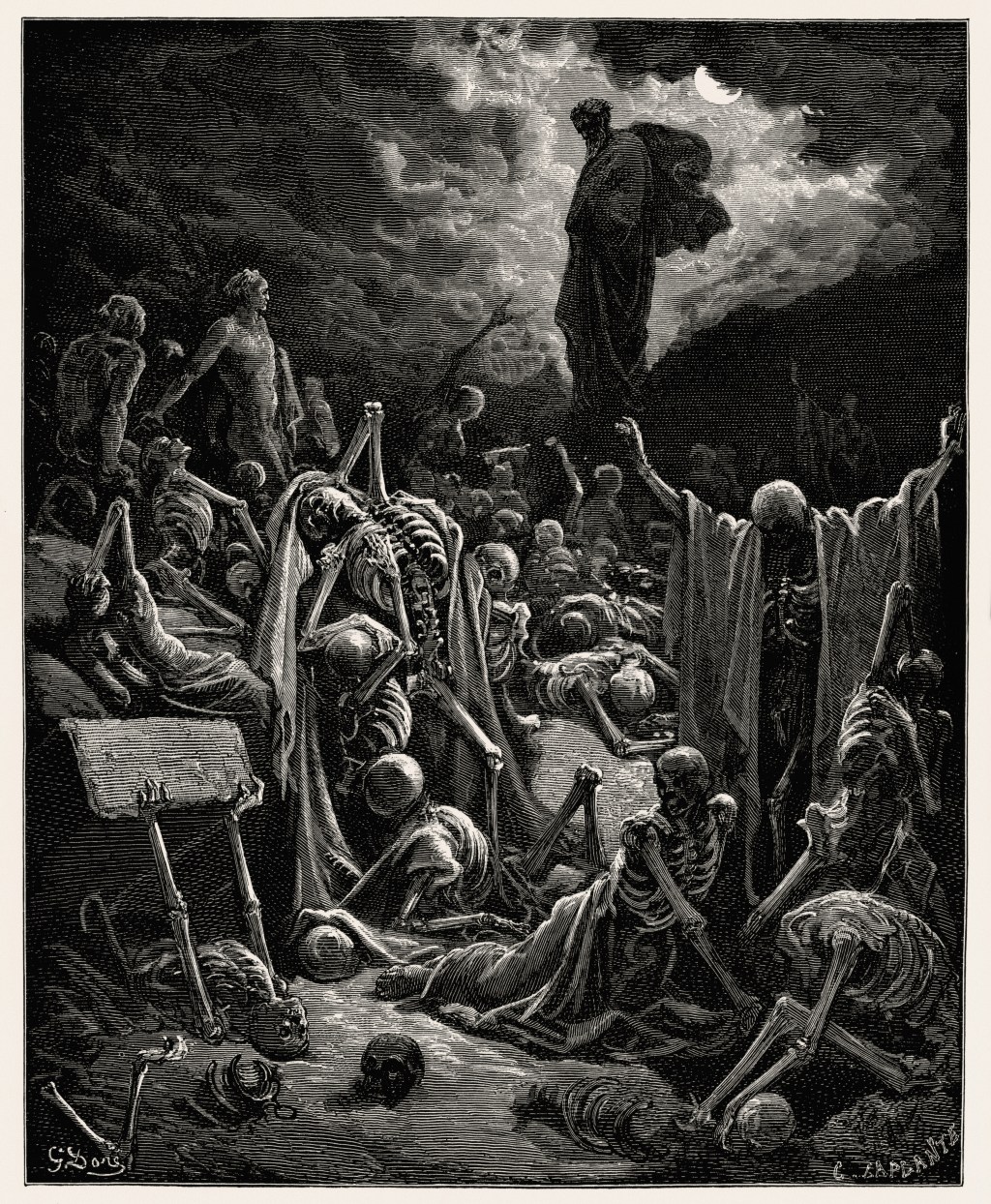
Doré’s masterful contrast of darkness and divine light heightens the drama. The skeletal figures obviously symbolize mortality, while the luminous hand of God is the source of life that conquers even the deepest shadows. It underscores the theological reality that only through divine intervention can the desolate wasteland of death be transformed into the vibrant reality of life.
Doré’s “Valley of Dry Bones” speaks to the ongoing struggle between death and life, the fallen human condition, and the hope found in the Easter promise. At the same time, it points to the future eschatological restoration when, through Christ, bodily resurrection and eternal life will become a reality, fulfilling the promise of divine redemption for humanity.
